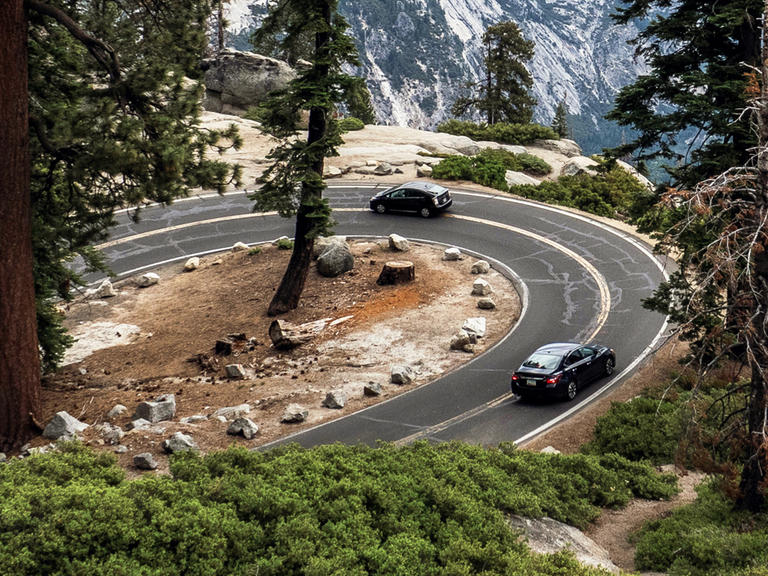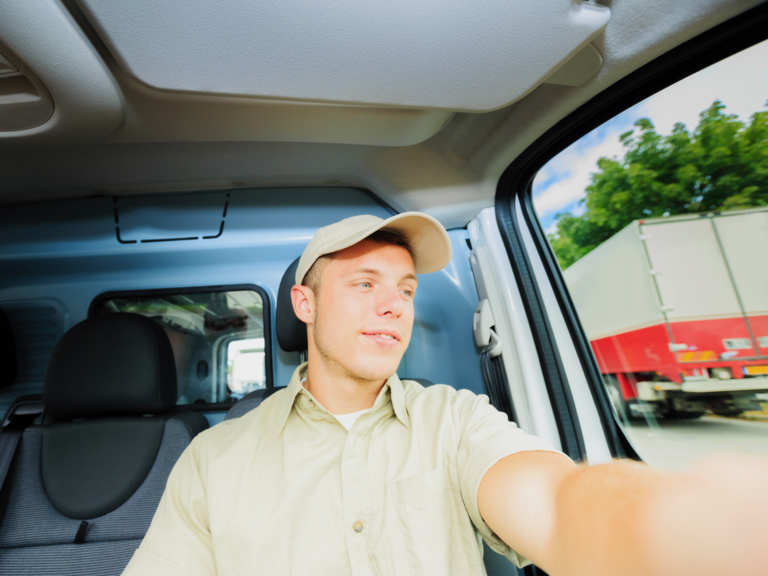Leveling up AI: why safety is the top priority

AI is transforming work and life as we know it — and now, it's making vehicles even safer than ever.
AI chatbots have exploded in popularity since the launch of ChatGPT. However, there’s a lot more to the technology than getting a virtual assistant to write your emails, create an image or code a website.
With powerful large language models (LLMs) and potent machine learning, AI can not only complete complex tasks in a fraction of the time a human can, but it can also help to predict events before they even happen. Imagine the safety possibilities of that!
“The integration of AI has had a profound impact on how we approach safety,” said Jamie Mallinder, Chief Risk Officer at recruitment consultancy Collar. “By predicting potential risks, it enables us to address hazards before they become incidents, ushering in a new era in the evolution of safety. The power of foresight that AI offers is not just revolutionizing safety protocols but also shaping a safer future for workers worldwide."
From minimizing distracted driving to predicting potholes, let’s take a look at how AI is prioritizing automotive safety.

Marrying route guidance with assistance
At CES 2024, Mercedes-Benz demoed its vision for the future of AI-assisted navigation. MBUX Surround Navigation combines assistance with route guidance for better driver situational awareness. Presented as 3D graphics on the car’s infotainment screen, it shows drivers the vehicles, pedestrians and other hazards ahead — even if they’re out of sight of the driver.
"For Mercedes-Benz the top priority is safety,” said Georges Massing, Vice President of Automated Driving at Mercedes-Benz. "This is the main guiding principle of our driving system, and that's why we are using different sensors and systems working redundantly together. We attach great importance to the greatest possible safety with the highest level of comfort."
MBUX Surround Navigation is part of Mercedes-Benz’s new generative AI-powered Virtual Assistant. Using large language models for more human-like interactions, it aims to help reduce driver distraction by answering their questions and managing their tasks intelligently, allowing them to focus on the journey ahead.

Read our entire interview with Georges Massing, Mercedes-Benz VP of Automated Driving and E/E Integration
Creating a more user-friendly user manual
One of the key issues with large language models like ChatGPT is their unreliability with factual information. Sometimes they “hallucinate” — in other words, they simply make things up. Clearly, this is an issue if you’re a car manufacturer and responsible for keeping drivers safe with reliable information about the car and its functions. But one solution coming from BMW is the future iteration of its Intelligent Personal Assistant — and it promises to rewrite the future of the car manual.
At this year's CES, BMW demonstrated its “hallucination-free” AI, which uses a large language model with “retrieval-augmented generation” to replace the user manual. If a driver asks the car a question, the LLM uses only official BMW sources in the answer. This gives drivers 100% reliable information, reduces the complexity of its technology, and means you now have an excuse to never reread the manual again.
Driving down truck crashes
HERE and Bosch have teamed up with Daimler Truck to make commercial trucking safer, more sustainable and less stressful. Daimler Truck’s Predictive Powertrain Control (PPC) is a cruise control system for commercial vehicles that is powered by HERE ADAS, HERE UniMap and Bosch’s Electronic Horizon software.
Together, these systems can reliably analyze road topography, traffic signs, speed limits, driving rules and other road features to give drivers a better view of the road ahead. Using AI, PPC can process vast amounts of sensor, map, lidar and satellite data simultaneously.
“Predictive Powertrain Control not only helps to substantially reduce fuel consumption and lower CO2 emissions but also creates a safer and stress-free driving experience,” said Leen Balcaen, HERE Vice President of Product Management.

Predicting potholes
Potholes are a perennial problem. In the UK, for instance, 49% of people surveyed by the RAC, a breakdown organization, said the condition and maintenance of local roads was their top automotive pet peeve of 2023. Not only can potholes cause significant damage to vehicles, but they can also cause crashes, too.
The issue is that it’s time-consuming and expensive for authorities to survey which roads need attention and then prioritize where to spend their limited repair budgets. Until now, that is.
Using location technology, Murphy Geospatial's GeoDrive is a technology that can capture 100km of geospatial survey data in a single day using vehicle-mounted technology. This allows road authorities to not only detect potholes but also use AI to predict where new ones might occur from cracks developing in the road.
“Using AI algorithms for automatic options ensures efficient identification and assessment of road conditions,” said Paraic Quirke, director and head of infrastructure at Murphy Geospatial. “This data empowers asset owners to explore predictive maintenance of roads more readily, enhancing the longevity and efficiency of their infrastructure investments.”

Keeping drivers’ eyes on the road
There are, on average, 500k large truck crashes a year in the US, with driver impairment and distraction the second most common causes of fatal large truck accidents. Construction equipment giant Caterpillar, which manufactures bulldozers and large mining equipment, has created a system to detect driver fatigue using eye and facial tracking.
Combining cameras, GPS, sensors and AI, the system can monitor driver fatigue and distraction through eye activity and head movement and will sound an alarm if a driver’s eyes remain shut for more than 1.6 seconds. So far, the tech has reduced driver fatigue incidents by 90%.
“Mining customers were asking questions about driver drowsiness,” said David Edwards, Market Manager for Safety at Caterpillar. “They have to keep machines running 24/7 in order to be profitable, but human bodies aren’t designed to perform at peak efficiencies in the nighttime hours. If they’re looking at their iPods or cell phones, it can remind them to check the windshield if they haven’t for a few seconds.”
Have your say
Sign up for our newsletter
Why sign up:
- Latest offers and discounts
- Tailored content delivered weekly
- Exclusive events
- One click to unsubscribe


